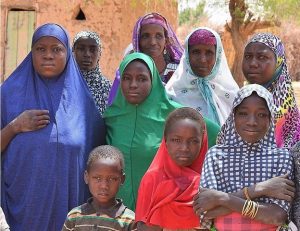By Amber Nicolai

Source: NigerTZai, Wikimedia Commons
As the global HIV epidemic rages on, young women and adolescent girls in sub-Saharan Africa are disproportionately affected. Although women between the ages of 15 and 24 only make up 10% of the region’s population, they account for one in five new HIV cases.
Gender disparity plays such a large part in the HIV epidemic that organizations like The Global Fund to Fight AIDS, Tuberculosis and Malaria see empowering women as crucial in the fight against HIV.
How Does Gender Inequality Affect HIV Rates?
Gender-Based Violence
In regions where HIV is prevalent, gender-based violence is a significant factor in determining whether a woman or adolescent girl will contract the virus. Women in these regions are 50% more likely to contract HIV if they experience intimate partner violence.
Women who experience gender-based violence are often afraid to speak up and insist on safer sex practices, leaving them vulnerable to the disease. Child marriage, which dramatically increases a girl’s chances of being exposed to intimate partner violence, compounds the problem.
Educational Disparity
Women and girls receive less education in many sub-Saharan countries, such as Niger. Keeping girls in school longer is associated with lower rates of HIV for several reasons:
- Girls with more education are less likely to become child brides and more likely to have control over their sexual health
- Girls who stay in school are more likely to learn about HIV prevention
- Better educated girls and women are better able to support their families
Unfortunately, many girls in Niger drop out of school at a young age to take on family responsibilities, such as walking several miles a day to gather water. This increases their educational and income disparity, leading to increased risks of gender-based violence and HIV contraction.
Lack of Access to Preventative Care and Education
Many countries in sub-Saharan countries have laws in place that restrict access to HIV screenings and other sexual health services for women and girls without parental or spousal consent. This prevents many women and girls from accessing the preventative care they need to stay HIV-free.
Improving access to preventative care and implementing HIV education programs can go a long way towards reducing HIV rates among young women.
Economic Empowerment for Women Can Help
Reducing gender-based economic disparity is crucial in improving women’s standing in society, which restores in them a sense of agency and empowerment. Empowering women in this way reduces risks of violence and poverty and improves access to health education, all of which decrease HIV risks.
Programs like the Wells Bring Hope Microfinance Training for Women in Niger give women the resources they need to generate income for their families, improve their position in society, and become role models for their daughters.
Sources:
https://www.cfr.org/blog/fighting-hiv-young-women-through-economic-empowerment
https://www.theglobalfund.org/media/1296/publication_womengirls_focuson_en.pdf
https://www.avert.org/professionals/social-issues/gender-inequality
https://www.unaids.org/sites/default/files/media_asset/2019_women-and-hiv_en.pd
https://www.savethechildren.org.uk/content/dam/global/reports/advocacy/child-marriage-niger.pdf


